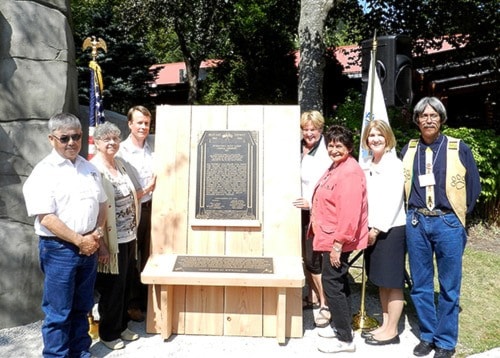This year marks a century of international cooperation in conserving and managing Fraser River salmon.
The Hell’s Gate rockslides of 1913 and 1914 forever changed the river ecosystem and the migration of sockeye to every major tributary in the B.C. Interior.
“The rockslides began a century of disagreement, cooperation, fights, and resolution among thousands of people who have worked to get millions of fish around the blockage here at Hell’s Gate and spawning through the waters here just as nature first intended,” said John Field, executive secretary of the Pacific Salmon Commission. “This centennial is a rare opportunity to gather leaders from Canada, the United States, and First Nations tribes to commemorate their hard work over the last 100 years, hear each other’s stories, share points of view and maybe learn how to handle the next 100 years.”
Many politicians and dignitaries from both sides of the border were on hand last Thursday at Hell’s Gate to mark the milestone and unveil two commemorative plaques. Several First Nations representatives were also in attendance to share their perspective on the historic slides and the impact on their people.
“Losing the number one protein resource was devastating to all the tribes above Hell’s Gate,” said Chief Fred Sampson of the Siska First Nation. “Without these fishways, I think the salmon would probably have disappeared.”
Sampson pointed out that an estimated 20 per cent of the upriver First Nation population died due to malnutrition and starvation following the disaster. There was also a huge impact to moose and deer in the valley because there were no fish.
In 1913, the first massive rock slides at Hell’s Gate blocked the passage of sockeye salmon en route to their spawning grounds throughout the Fraser River system in the Interior. Quickly, efforts began to assess the situation and develop lasting solutions to protect the fisheries of commercial and cultural importance to both Canada and the United States. While small-scale efforts to move fish around the blockage started immediately, it would take years of dialogue before consensus could be reached on the scope of the problem and a practical solution. First Nations played a key role in the rebuilding process, with members from tribes all over the province traveling to Hell’s Gate to salvage some of the trapped salmon.
In 1937, a treaty between the United States and Canada provided the foundation for a large-scale formal cooperation to restore and manage Fraser River salmon through the International Pacific Salmon Fisheries Commission. The IPSFC facilitated the construction of massive concrete fishways around the blockage at Hell’s Gate in 1945 and 1946. The 1937 treaty was eventually replaced in 1985 with a new agreement to cover regional salmon fisheries from Alaska through B.C. to the U.S. Northwest via the Pacific Salmon Commission.
